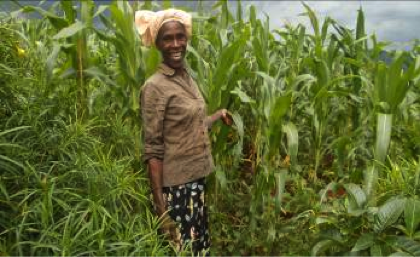Our Recent Grants to African Communities
 We love this time of year. We just awarded $587,600 in grants to 44 impressive community-based organizations in sub-Saharan Africa who are doing great work for children and families.
After months of reviewing grant requests, talking with these groups by email, skype and a few in-person visits, it all pays off in this great moment of starting another year of relationships with some of the most dedicated, smart and inspiring people we’re lucky enough to work with over the next twelve months.
We love this time of year. We just awarded $587,600 in grants to 44 impressive community-based organizations in sub-Saharan Africa who are doing great work for children and families.
After months of reviewing grant requests, talking with these groups by email, skype and a few in-person visits, it all pays off in this great moment of starting another year of relationships with some of the most dedicated, smart and inspiring people we’re lucky enough to work with over the next twelve months.
We’ll be telling you more about these 44 Firelight partners throughout the year, but here are a few highlights to get started.
Firelight partners intend to serve nearly 100,000 individuals with these 44 grants. That 100,000 looks like this:
- 56% children and youth
- 26% community members
- 14% parents and caregivers
- 4% teachers and paraprofessionals.
This was the first year that we asked partners to estimate the number of teachers and paraprofessionals they would serve. Teachers and paraprofessionals (such as paralegals and child-care providers) mostly benefit by receiving free trainings focused on improving skills that they need to better support children and families.
 Similar to previous years, our partners continue to serve more female beneficiaries than males. This is especially true with regard to their support for parents and caregivers, where 65% of the beneficiaries are women.
Similar to previous years, our partners continue to serve more female beneficiaries than males. This is especially true with regard to their support for parents and caregivers, where 65% of the beneficiaries are women.
It’s tempting to attribute this to the idea that women need more support than men, but many partners have told us that they strategically focus their efforts on supporting women because they've seen that it has a greater positive impact on the family as a whole.
Apart from general operating support, the highest-funded program area this year is economic strengthening, which includes income-generating activities like crop and livestock farming, savings and loan projects, and small business development.
- About two-thirds of the funding in this category will help with business start-up costs, while the other third will be used primarily for trainings, workshops, and business planning.
- A significant number of these activities are intended to bolster family income and help cover school-related costs for children.
These 44 grants represent the bulk of our grantmaking this year, but we expect to award at least a dozen more grants before the end of the year. We also have a number of partners who were awarded three-year grants last spring that will be receiving their second year of funding at the start of the new year.
It's going to be another great year of investing communities to stop poverty!


